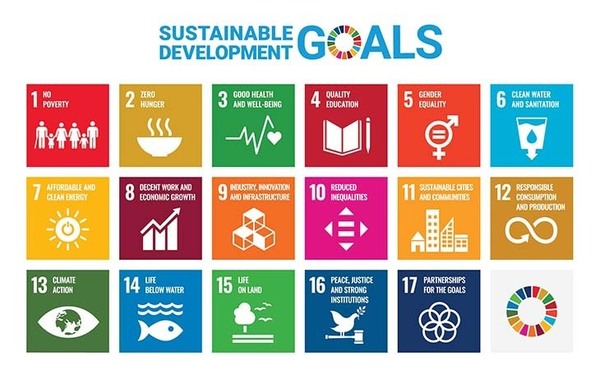The state of the planet will be a key topic of discussion as the United Nations convenes the SDG Summit (Sept. 18-19) at its New York Headquarters during the General Assembly high-level week in late September. The session marks a crucial milestone in the journey towards achieving the 2030 Agenda and the urgent need to put the 17 United Nations Sustainable Development Goals (SDGs) back on track, says Pulte Institute Visiting Associate Rachel Svetanoff.
 The UN’s 17 interlinked objectives are designed to serve as a "shared blueprint for peace and prosperity.”
The UN’s 17 interlinked objectives are designed to serve as a "shared blueprint for peace and prosperity.”The UN General Assembly adopted the SDGs in 2015 as part of the 2030 Agenda for Sustainable Development. They address the world’s most monumental challenges, including poverty, inequality, climate change, environmental degradation, peace, and justice. Some of the objectives are improved industry, innovation, and infrastructure; affordable and clean energy; and sustainable cities and communities.
Global Goals Week is intended to mobilize communities, demand urgency, and supercharge solutions for the SDGs. "The UN 2030 Sustainable Development Agenda, colloquially referred to as SDGs, is at its mid-point in 2023 with only seven years left to transform society for the betterment of people and planet," Svetanoff says. "Despite record-breaking heat, wildfires, and flooding, progress towards mitigating these catastrophic effects through U.S. policy has been stagnating at best and actively backsliding at worst."
But there is a bright spot. A few city governments are planning their futures around the agenda, and Svetanoff says we need to support local work both at home and abroad because communities are where people most directly relate to the social, economic, and political processes taking place — and where they can be most active in shaping them.
"Local leaders lead resurgence efforts time and time again," Svetanoff says. "From helping communities emerge from the rubble of earthquake destruction in Morocco to residents stepping up to pick up litter from streets and roads in Indianapolis."
The deep and long-standing leadership from communities themselves, coupled with the fact that local officials can move quickly to address their problems, from housing zoning to climate change to gun control, is why Svetanoff believes they are excellent vehicles to lead local efforts to achieve the SDGs. They know how global problems play out in their own backyards and how best to address them at a grassroots level.
Plus, Americans view local elected officials much more favorably than members of Congress, per Pew Research Center. Two-thirds of U.S. adults think local elected officials care about the people they represent "all or most" (14%) or "some of the time" (53%). Just half say the same about members of Congress.
"Over the last couple of years, progress toward achieving the SDGs stalled, taking a back seat to the pandemic," Svetanoff says. "But it’s time to shift back into high gear and recommit to the work it takes to make reaching the goals a reality and confront the underlying, systemic issues of inequity the SDGs expose."
Check out the podcast 'Global Health Pursuit'
where Rachel Svetanoff discusses the UN's Sustainable Development Goals.